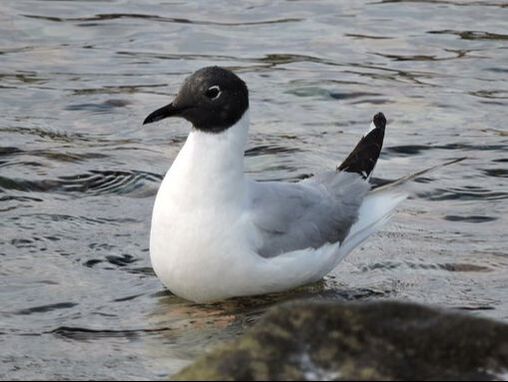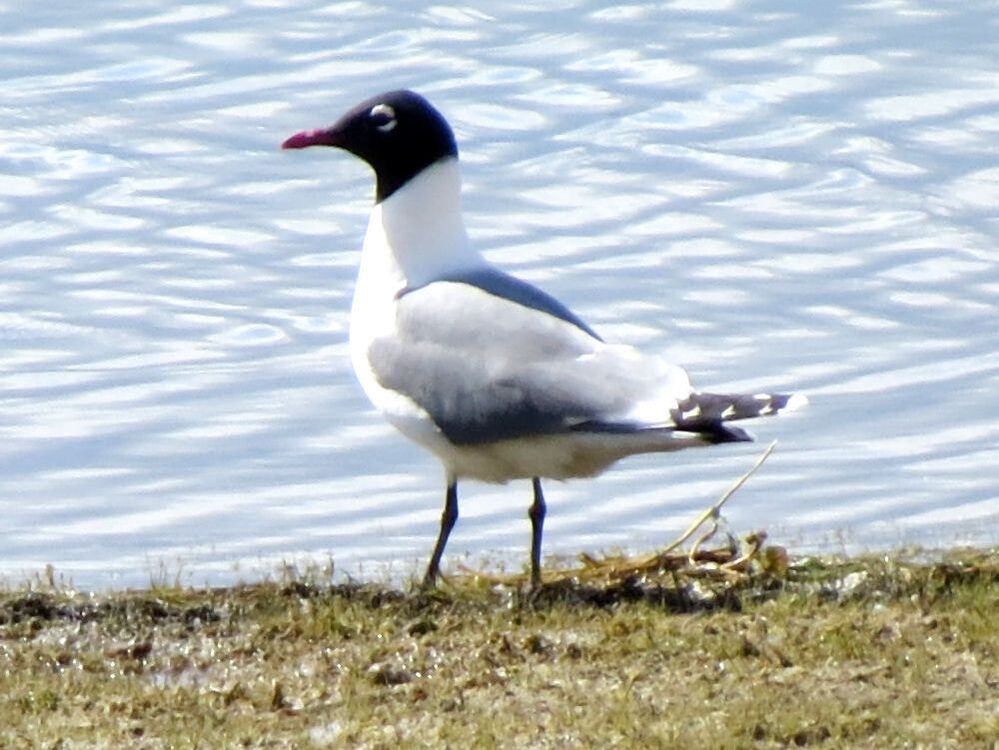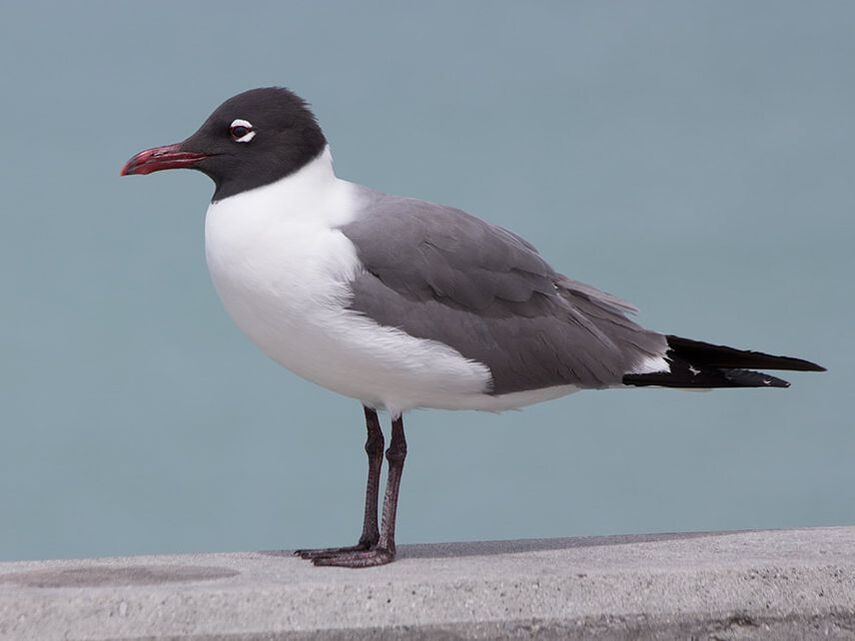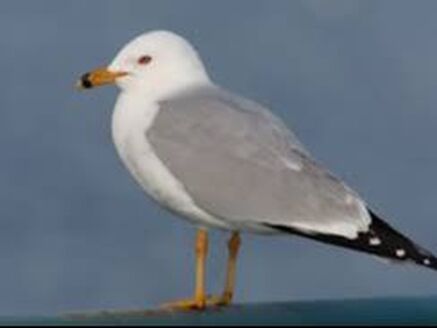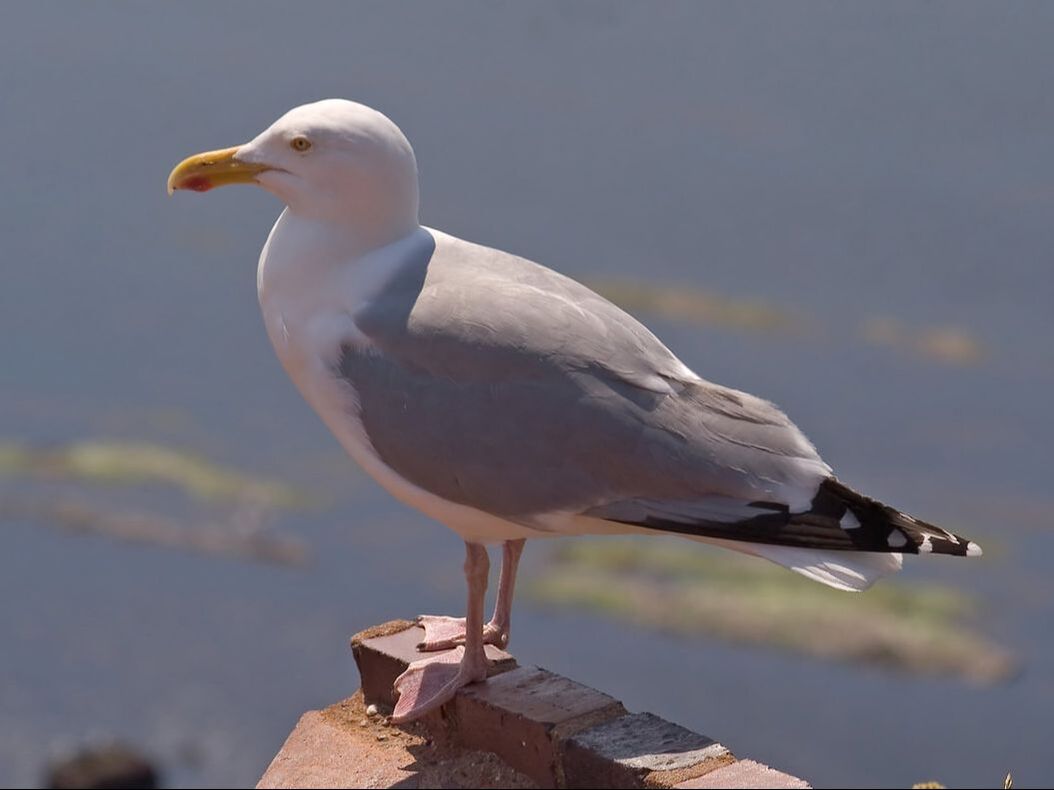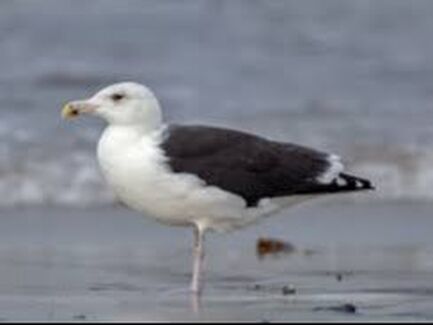Gulls - in Belize
Bonaparte's Gull
Bonaparte's Gull - Small, pale gull with white underparts and gray back. Thin, black bill. Often seen in flight. Note unique wing pattern: several outer primaries white with black tips. Red legs. Adults in breeding plumage show black head. Nonbreeding and immatures have white head with black spot behind eye. Immatures also show white primaries with blackish-brown markings on the upperwing. Often seen in large flocks in coastal areas, bays, coves, and lakes during migration and winter. Feeds on small fish, invertebrates, and insects, often picking them off the surface in flight. Breeds near water in the boreal forest; the only gull that makes a stick nest.
BELIZE HABITAT - Coastal waters, especially near harbors; estuaries; lagoons. Where can I find this bird in Belize? Regular and irregular winter visitor in north, late December to early June. Recorded from Ambergris Caye, Belize City, Crooked Tree Belize, and Hill Bank in Orange Walk. INTERESTING FACTS
|
Franklin's Gull
Franklin's Gull - Medium-sized gull, mostly seen inland in North America, but winters offshore in South America. Breeds around lakes and marshes, commonly seen in fields or beaches during migration. Breeding plumage shows black head with bold white eye-arcs, small red bill, and prominent white spots on black wingtips. Nonbreeding similar but with partial black hood and dark bill. Young birds show more brown tones than adults. White underparts are often tinged pink. Usually seen in flocks. Most similar to Laughing Gull; where range overlaps, look for shorter bill, limited black in the wings, and white wingtips.
BELIZE HABITAT - Coastal waters along and near beaches, estuaries, lagoons, shrimp farms. Where can I find this bird in Belize? Occasionally spring and autumn transient along coast (including Ambergris Caye), late March to late May and mid-October to early December. |
Laughing Gull
Laughing Gull - Common black-hooded gull of beaches and other coastal areas in summer; found from East Coast of U.S. south to Mexico and northern South America. In winter they retreat from northern parts of their range and head becomes white with gray smudging. Darker gray above than other gulls of similar size. Bill is dark red in summer and black in winter. Sticks to coastal areas, rarely venturing far inland.
BELIZE HABITAT - Coastal areas, cayes, and offshore, occasionally in migration at inland lagoons. Where can I find this bird in Belize? Common winter visitor along coast and offshore; locally common in summer. Despite the relatively large number that remain through summer around Belize City, Dangriga, and populated cayes, nesting colones in Belize are few and small, with nesting documented on only a few small cayes off Toledo and south of Stan Creek District. Inland, see regularly at Crooked Tree Belize and New River, Orange Walk in Spring. INTERESTING FACTS
|
Ring-Billed Gull
Ring Billed Gull - Widespread and common inland gull in the U.S. and Canada. Forages along lakes, rivers, and ponds, as well as, plowed fields, mall parking lots, and parks. Often in flocks sitting on ground or flying between roosting and foraging sites. Smaller and more slender than Herring Gull with thinner bill. Compared with California Gull, adults are lighter gray on back, thinner billed, and lack red spot on bill.
BELIZE HABITAT - Beaches, harbors, lagoons. Where can I find this bird in Belize? Very uncommon winter visitor south of Ambergris Caye and Belize City, occasionally to Punta Gorda, mid-August to mid-April. Recorded once inland at Crooked Tree Belize. |
Herring Gull
Herring Gull - Widespread and often common inland and on the coast. Adults have gray back with black wingtips. Takes four years for immatures to progress from mostly brown to white and gray; intermediate plumages are often mottled and messy. Varies incrementally across a wide geographic range. Scavenges shorelines, mudflats, plowed fields, and open ocean, picking up scraps wherever it can. Often congregates in large groups with other gulls, especially around fishing boats, beaches, piers, and landfills. Far-carrying yelping screams are a common sound of waterside habitats around the world.
BELIZE HABITAT - Harbors, beaches. Where can I find this bird in Belize? Uncommon winter visitor along coast south occasionally to Punta Gorda; mid-October to late April. Recorded once inland at Hill Bank Orange Walk. INTERESTING FACTS
|
Great-Black Backed Gull
Great Black Backed Gull - Largest gull in the world. Adults have dark black backs that contrast with their white body feathers. Thick bill and large size help separate immatures from other gulls. Also, note whiter head and colder black-and-white tones than immature Herring Gull. Found primarily at coastal sites in the Northeast U.S., the Great Lakes, and Europe. Hardy and fierce, it patrols open water and beaches for prey and scavenging opportunities.
BELIZE HABITAT - Coastal beaches, harbors. Where can I find this bird in Belize? In and around Belize City harbor, coastal areas. |

